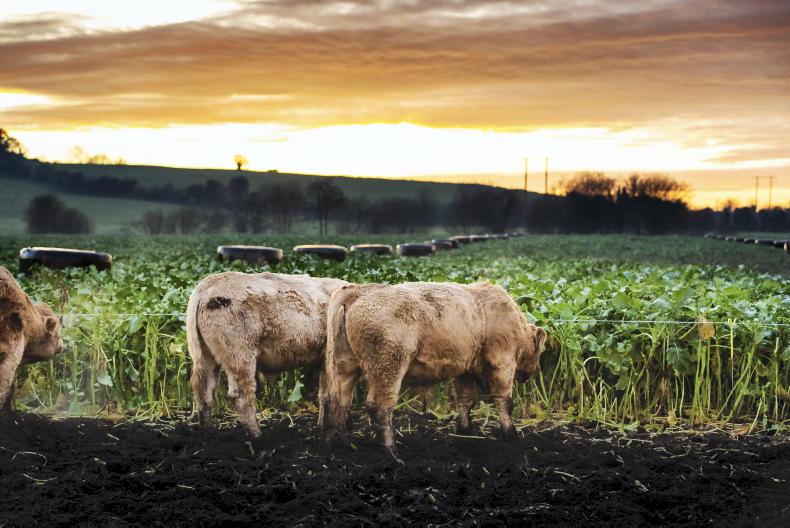Many farms will be beginning to transition stock on to fodder crops over the coming days, where stock are to be grazed over the winter months. Managing this transition needs to be carefully considered.
The transition from a grass- or silage-based diet to a forage crop needs to be carefully managed.
While these crops are forage crops, it is better to think of them as a wet concentrate feed.
As you would when transitioning to a high-concentrate diet, the same should be done when starting to feed forage crops. Start with a small proportion of the diet being forage crop, while the reminder of the diet remains the same.
Daily allocation
Gradually, over a 10-day to two-week period, increase the daily allocation of forage crop to the animal.
This period should increase to three weeks where fodder beet is being offered.
This is especially true for cattle. Sheep are less prone to issues and can be transitioned that bit quicker.
The total forage crop proportion of the diet should not exceed two-thirds on a dry matter basis.
A source of long fibre is required to make up the remainder of the diet. Straw where readily available can be used for animals that you are looking to maintain rather than grow or increase condition on.
For young or growing stock, grass silage may be a better option, as long as it is not too leafy.
In this week’s Irish Farmers Journal, the Focus pages concentrate on being winter-ready, with some top tips for outwintering stock, some labour- and time-saving ideas for part-time farmers, as well as getting both your farmyard and machinery ready for the winter months ahead.






 This is a subscriber-only article
This is a subscriber-only article










SHARING OPTIONS: